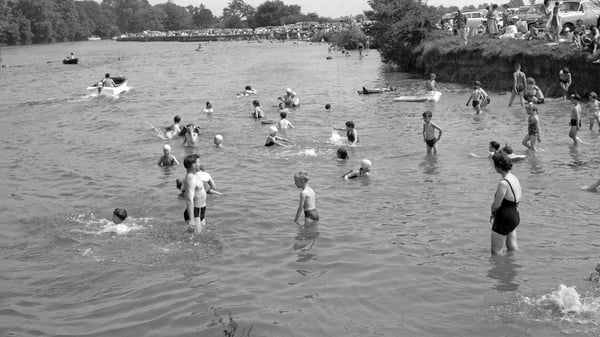Analysis: The many superstitions and customs around pregnancy demonstrated a belief that the process could be influenced by unseen forces
In Ireland of the past, many folk customs, rituals and superstitions surrounded conception, pregnancy and birth. The general belief was that the whole process could be influenced by and was susceptible to preternatural forces. Such beliefs (some of which may be pre-Christian in origin) relate to numerous aspects of Irish rural life including death, marriage, material culture and farming practices. Many of these superstitions and customs were so deep rooted they persisted into living memory.
Conceptions and fertility
Until recently in Ireland, there was a huge importance placed on getting married and having children. If someone remained single, they were considered to be of reduced social status and would have felt huge pressure to conform. This was unlike the societal pity afforded to those who were single not by choice - widows, widowers and on the rare occasion, those who were abandoned by their spouses.
But it wasn't enough to be married and the idea that one might not have children was a dreadful prospect. To demonstrate this, a very malevolent old Irish cursing ritual was to tie knots in a handkerchief during a wedding to stop the newly married couple from conceiving.
We need your consent to load this rte-player contentWe use rte-player to manage extra content that can set cookies on your device and collect data about your activity. Please review their details and accept them to load the content.Manage Preferences
From RTÉ Radio 1's Beo ar Éigean, Siún, Sinéad and Áine are talking about folklore and if we value it
If a woman did not have children for whatever reason, she was called 'barren' and regarded with a mixture of sympathy and suspicion. A cruel form of exclusion was meted out to such women. They were somehow considered harbingers of 'bad luck’ and it was thought unlucky for a ‘barren’ woman to see a baby before its christening, for example. However, this Otherly status of childless women was thought to make them good herbalists and practitioners of folk medicine.
Unlike today, there was little in terms of modern medicine to offer effective help or hope to those who struggled with fertility. There were some rituals and remedies available: the seed of docks might be tied to the arm of a woman, for example.
Women who were childless - or unable to have children - were encouraged to attend and watch the spectacle of the May Baby, or Babóg Bealtaine, a public gathering that occurred on May Day in some parts of the country. A doll made from straw was attached to a pole and a man and his wife, dressed in straw costume, danced around the doll to a musical accompaniment.
We need your consent to load this rte-player contentWe use rte-player to manage extra content that can set cookies on your device and collect data about your activity. Please review their details and accept them to load the content.Manage Preferences
From RTÉ Radio 1's Ray D'Arcy Show, Michael Fortune discusses some of the folklore traditions associated with May
They performed a dance that has been described as sexually suggestive: E. Estyn Evans wrote that it was a "magical pantomime originally intended to secure the success of the year's crops". It sounds like something from The Wicker Man and not likely to be of Christian origin. There must have been some deep-rooted fertility aspect attached to it, because the childless women present were encouraged to look on and touch the doll in the belief that it would help them conceive.
Similarly, some ancient standing stones accrued association with fertility and luck and some holy wells were pilgrimage sites for those who struggled to conceive. Some medieval Sheela-na-Gig carvings were associated with fertility rituals and one Sheela in the west of Ireland became a place of pilgrimage for local women. The belief was that touching the Sheela's vulva would give increased fertility. The custodian of the site proudly claimed a great success rate and high numbers of twin births among visitors!
Pregnancy
Until the 20th century, many folk beliefs persisted about unborn babies being susceptible to outside influences and there were many superstitions around pregnancy. If a pregnant woman was injured in some way, then it was believed that same injury would transfer to her unborn child. If she saw a hare, her baby might be born with a disfigurement, so the woman would have to tear a part of her clothing to break that curse. Pregnant women should not be around death: they were not supposed to enter graveyards or attend wakes.
We need your consent to load this rte-player contentWe use rte-player to manage extra content that can set cookies on your device and collect data about your activity. Please review their details and accept them to load the content.Manage Preferences
From RTÉ Archives, Katherine Mullally tells Donncha Ó Dúlaing about the customs and superstitions surrounding births in the Ireland of long ago from a 1982 episode of Of Night and Light and the Half Light
Folk medical advice for pregnant women followed a similar line. It was thought that drinking plenty of water during pregnancy would give the baby clear skin. For an easy labour some advised expectant mothers to eat fish brains.
Pregnant women were considered lucky in some ways: a blacksmith would ask a pregnant woman to blow on the bellows in his forge for luck. It was considered unlucky to buy things for the baby before the birth, as it was thought fate was tempted in doing so. This belief remained until very recently in Ireland and I recall my own mother subscribing to it.
Labour and birth
The time of a woman's labour was thought to be a liminal one, when the spirit or other world was closer. The people involved were believed to be more susceptible to these forces at this time, so used prayer and ritual to protect themselves. When labour began, the father had to fetch the midwife and someone had to accompany him, as he was believed vulnerable to danger from evil forces. Similar beliefs abounded at Irish wakes (also considered a liminal time), where those who had to fetch wake provisions, or break the news of the death to others, had to be accompanied by another for "protection".
READ: The strange world of Irish folk cures, herbal remedies and faith healers
In the father's absence, female neighbours and family assisted the woman. During the birth, the chief assistance came from a folk-midwife, usually an older woman, who lived in the locality. Known as a "handywoman", she had little formal training, but years of practical experience. The brat, a cloth left out on St Brigid's Eve and believed to be blessed by the saint as she passed over the land, was considered to have healing powers and was given to the mother during childbirth.
No men or children were admitted during the labour or birth, unless a male medical doctor had to intervene. The father would often be told to make himself scarce to work on the farm while the midwife attended the birth. In some parts of Mayo, a ploughman was summoned to "shake" a woman enduring a difficult labour. This has been supposed to relate to his occupation being associated with fertility, as he would symbolically shake seeds on the fields.
The new born baby
The timing of the actual birth was also important: May Day was the luckiest day of the year to be born, but a baby born at Whitsuntide was considered cursed to kill someone during their life. A small living thing had to be placed in the hand of the infant (a fly, a worm) and the parent would crush it using the child’s hand, fulfilling the prophesy.
There were a myriad of folk beliefs and rituals to protect babies and children from the unseen forces that were believed to stalk the world of the living
The belief was that a child born with a ‘caul’ (a covering of the cranium) was extremely lucky. It was believed the child would never drown as long as the mother kept the caul (the caul itself was thought to have magical and curative properties).
After the birth, neighbours and family would visit the new born and mother, bringing gifts of food or clothes. The time was seen as a risky period for both until the baby was baptised and the mother ‘churched’ to protect them from evil.
‘Churching’ was a religious ritual Roman Catholic mothers had to undergo after giving birth a fortnight or so after the birth. New mothers could not undertake any household chores, enter a church or take part in any religious sacraments until they partook of the ritual. It was believed unlucky to meet an unchurched woman. A fortnight or so after the birth, the woman would go to the church to receive a blessing from the priest with holy water. It was important that babies were baptised very soon after the birth, and many were baptised without their mothers present. Churching rituals persisted into the 20th century.
We need your consent to load this rte-player contentWe use rte-player to manage extra content that can set cookies on your device and collect data about your activity. Please review their details and accept them to load the content.Manage Preferences
From RTÉ Archives, folklorist Pádraig Ó Héalaí explores the use of the priest's power in folklore from a 1982 episode of Of Night and Light and the Half Light
In the past, Catholic babies who died before baptism were believed to be denied entry to heaven and sent instead to ‘limbo’. They were buried in un-consecrated ground - cillíní - without a proper funeral and usually in unmarked graves. For baptised babies who died who were afforded a coffin, the custom was that the lid must never be nailed on or else the mother would never have another child.
It was believed that one must make a sign of the cross over an unbaptized child before holding him or her. It was said to be unlucky to take a coal out of the fire in the house containing an unbaptized child. A piece of iron or a needle was to be sewn into the baby's clothes and kept there until after baptism.
Talismanic objects and religious artefacts were placed into all babies' cradles to ward off evil, such as the iron tongs placed across the top to prevent abduction by fairies (well into living memory, little ones were doused in holy water - my cousins and I recall frequent "drownings" by my grandmother). Long past pregnancy and birth, there continued a myriad of folk beliefs and rituals to protect babies and children from the unseen forces that were believed to stalk the world of the living.
Follow RTÉ Brainstorm on WhatsApp and Instagram for more stories and updates
The views expressed here are those of the author and do not represent or reflect the views of RTÉ






